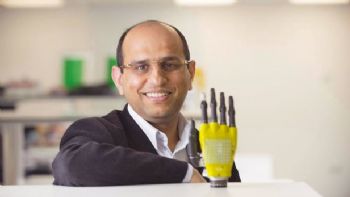
A synthetic skin for prosthetics limbs that can generate its own energy from solar power has been developed by an engineering team at Glasgow University.
Ravinder Dahiya at the university’s School of Engineering said: “Our researchers had already created an ‘electronic skin’ for prosthetic hands made with graphene.
The skin needed a battery to operate its sensors, but the latest breakthrough has integrated photo-voltaic cells into the skin to power it up.
“The real challenge was: ‘How can we put skin on top of photo-voltaic cells and yet get enough light to pass through the skin?’ The skin uses graphene, which is about a million times thinner than paper.
“It allows about 98% of the light that strikes its surface to pass through it, making it ideal for gathering energy from the sun to generate power. Human skin is an incredibly complex system, capable of detecting pressure, temperature and texture through an array of neural sensors that carry signals from the skin to the brain.
“Our researchers have made significant steps in creating prosthetic prototypes with synthetic skin, capable of making very sensitive pressure measurements.
“This means that prosthetic limbs can have a much a better sense of touch, temperature and texture.
“When the skin is placed on a prosthetic hand and the amputee touches an object, they are able to feel the contact pressure, as well as temperature.”